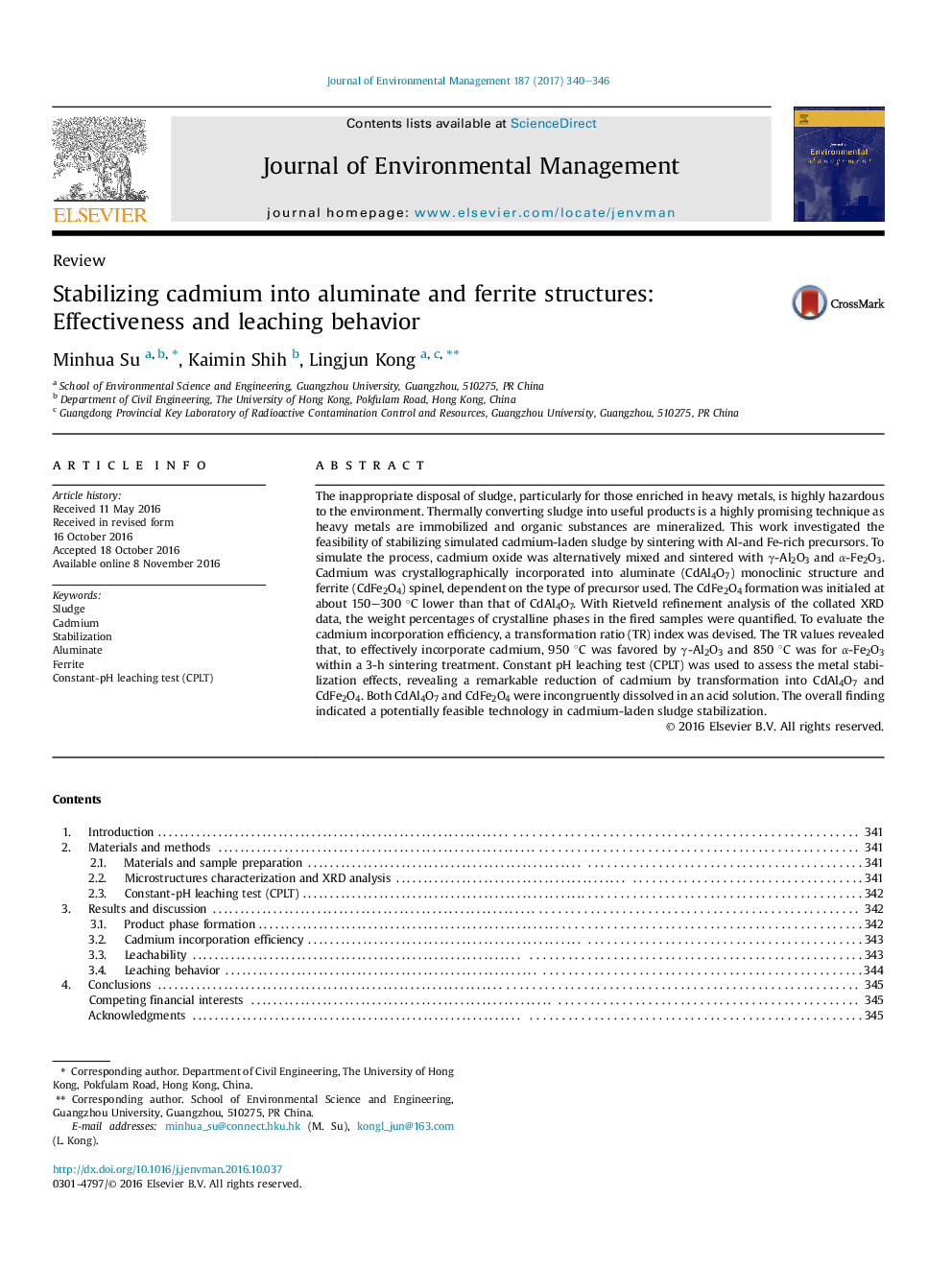| Article ID | Journal | Published Year | Pages | File Type |
|---|---|---|---|---|
| 5117382 | Journal of Environmental Management | 2017 | 7 Pages |
â¢Cd was successfully incorporated into CdAl4O7 and CdFe2O4 via solid state reactions.â¢High Cd incorporation efficiencies were achieved at attainable temperatures.â¢The Cd leachability was substantially reduced by forming aluminate and ferrite structures.â¢Both CdAl4O7 and CdFe2O4 are incongruently dissolved by proton attack.
The inappropriate disposal of sludge, particularly for those enriched in heavy metals, is highly hazardous to the environment. Thermally converting sludge into useful products is a highly promising technique as heavy metals are immobilized and organic substances are mineralized. This work investigated the feasibility of stabilizing simulated cadmium-laden sludge by sintering with Al-and Fe-rich precursors. To simulate the process, cadmium oxide was alternatively mixed and sintered with γ-Al2O3 and α-Fe2O3. Cadmium was crystallographically incorporated into aluminate (CdAl4O7) monoclinic structure and ferrite (CdFe2O4) spinel, dependent on the type of precursor used. The CdFe2O4 formation was initialed at about 150-300 °C lower than that of CdAl4O7. With Rietveld refinement analysis of the collated XRD data, the weight percentages of crystalline phases in the fired samples were quantified. To evaluate the cadmium incorporation efficiency, a transformation ratio (TR) index was devised. The TR values revealed that, to effectively incorporate cadmium, 950 °C was favored by γ-Al2O3 and 850 °C was for α-Fe2O3 within a 3-h sintering treatment. Constant pH leaching test (CPLT) was used to assess the metal stabilization effects, revealing a remarkable reduction of cadmium by transformation into CdAl4O7 and CdFe2O4. Both CdAl4O7 and CdFe2O4 were incongruently dissolved in an acid solution. The overall finding indicated a potentially feasible technology in cadmium-laden sludge stabilization.
